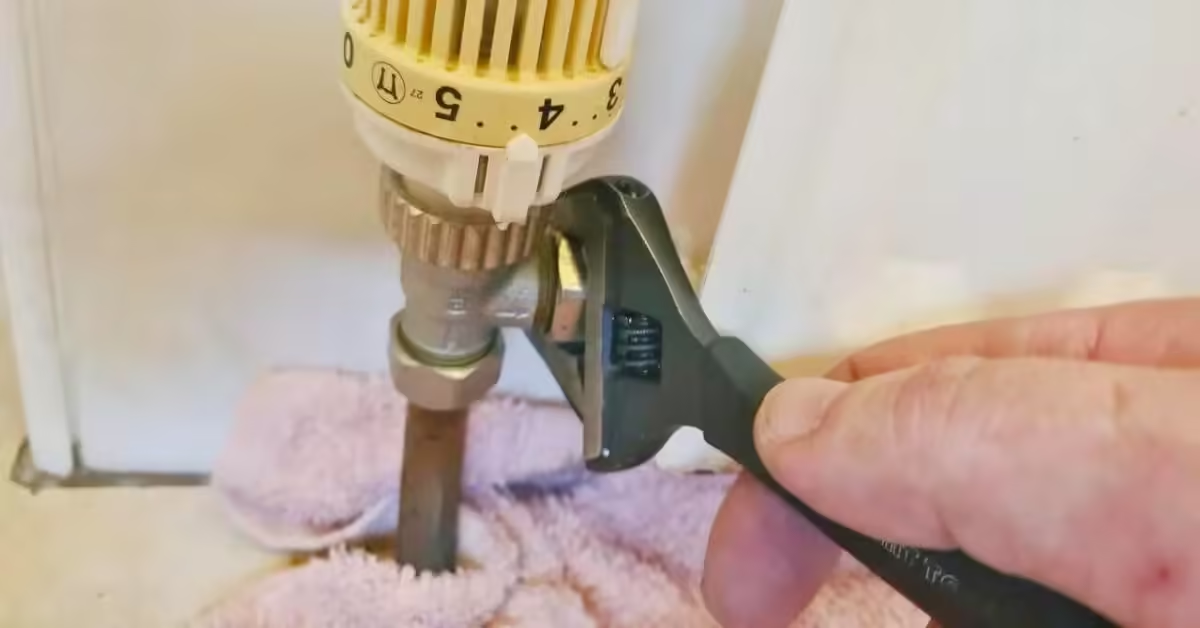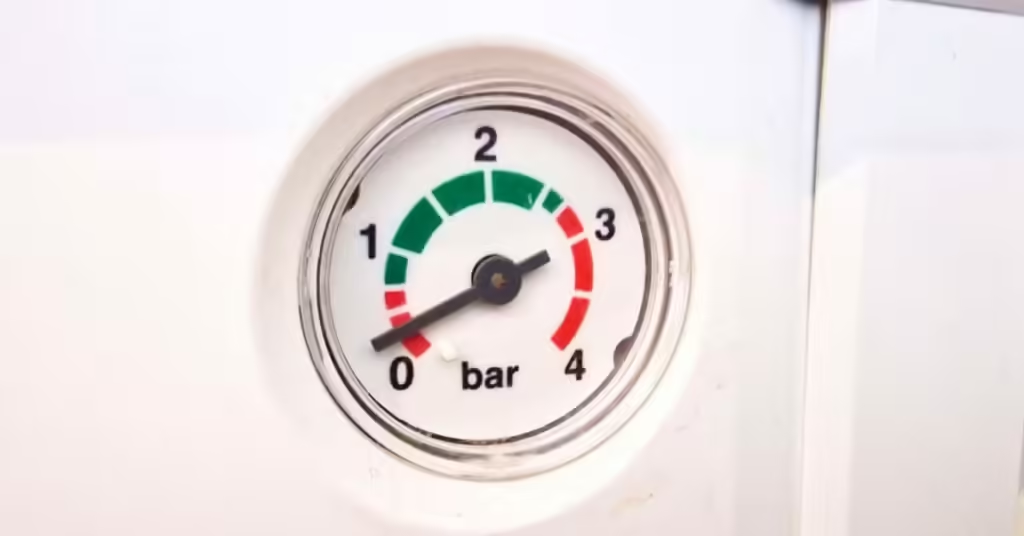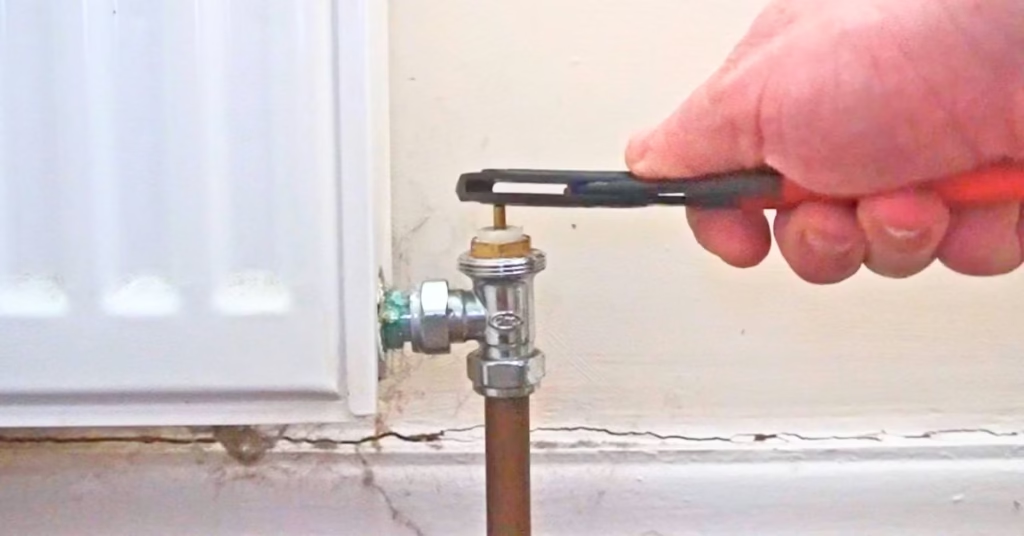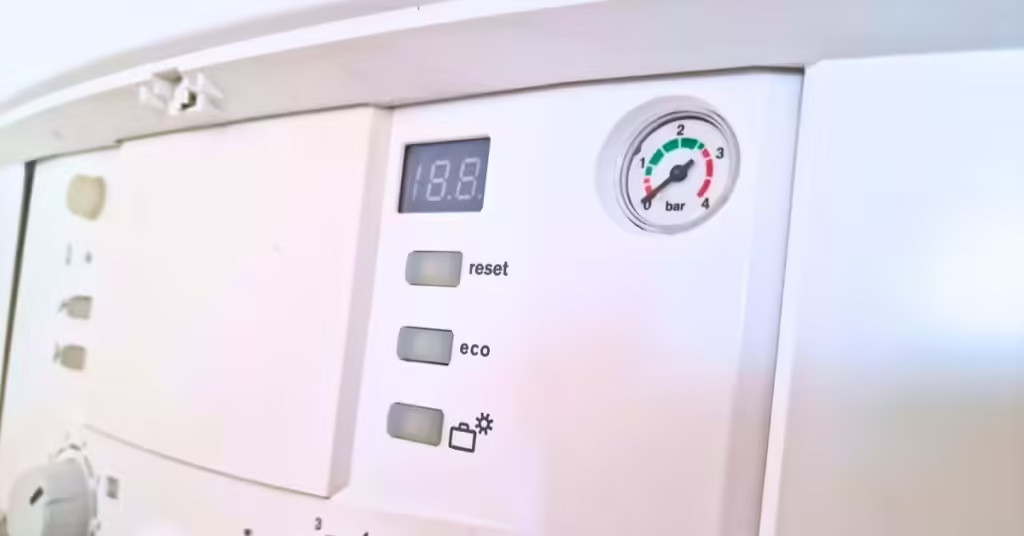Last updated on March 2nd, 2025
Most radiator leaks come from a radiator valve. If your radiator is leaking water from the panel, you will most likely need to replace the radiator. I have been fitting and fixing radiators full-time for over a decade and have learned a lot along the way.
Where is the valve leaking from?
A leak on a radiator valve can come from different places. Most are fixable but sometimes the valve needs replacing.
Valve leak locations:
- Connection nuts
- Gland nut
- Drain valve
- Tail
Connection nuts
A valve leaking from a side or bottom connection nut is the most common and easiest to fix. The simplest solution to fix the leak is to tighten the nut (turn clockwise) with an adjustable spanner. If this doesn’t work, add some plumbing jointing compound to the threads on the leaky nut.
Here’s how:
- Drop the pressure on the heating system to zero
- Turn the leaky nut anti-clockwise with a spanner until it comes away from the valve
- Add lots of plumbing jointing compound to the olive and threads
- Tighten the nut back onto the valve
- Clean all the excess jointing compound off the valve
- Refill the system and check for leak
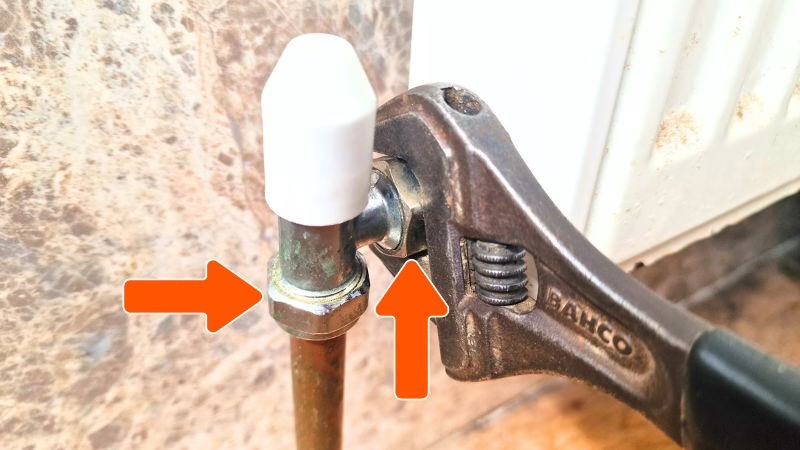
Gland nut
A leaking lockshield valve can be fixed easily when it’s leaking from the packing gland on the top of the valve. The gland nut can be tightened (turned clockwise) with a spanner. This will fix most leaks from the gland. If the valve leaks after tightening it, you can try wrapping some PTFE tape around the threads inside.
Here’s how:
- Drop the pressure on the heating system to zero
- Remove the packing gland with an adjustable spanner by turning anti-clockwise
- Wrap some PTFE tape around the threads
- Refit the gland in the valve
- Refill the system
- Check for leak

Drain valve
Some radiator valves have a drain off for draining the system. If it leaks you must replace the rubber washer seal inside. The washer typically gets damaged by over-tightening when closing the valve, it can get crushed or pushed into the valve and is tricky to remove.
How to replace the washer:
- Drain the heating system
- Remove the head of the radiator drain valve with some water pump pliers
- Remove the black rubber washer
- Fit new washer
- Refill the heating system
- Check for leak
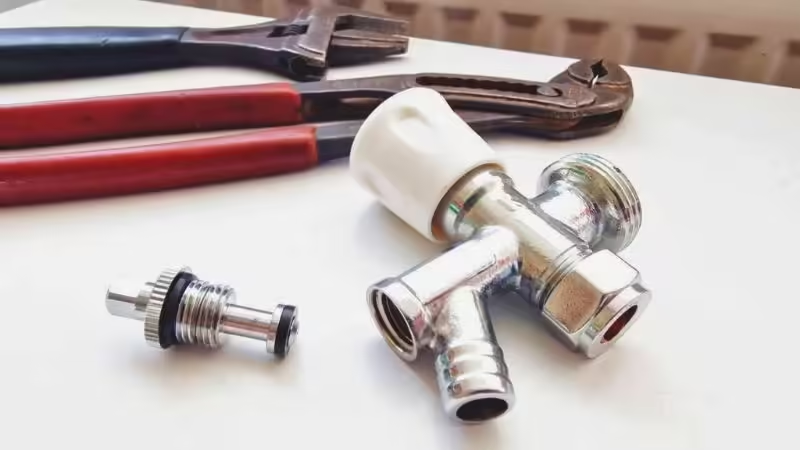
Valve tail
A radiator valve tail is what connects the valve to the radiator. When it leaks from the tail, you can sometimes tighten it with an adjustable spanner by turning it clockwise. But often the tail needs to be removed, cleaned, and fitted with some new PTFE tape.
- Drain the heating system
- Remove the radiator valve with a spanner
- Remove the valve tail with a spanner
- Clean the old PTFE tape off the tail
- Wrap some new PTFE tape around the threads (at least 15 wraps)
- Refit the tail and tighten with a spanner (make sure it’s very tight or it will leak, remove the tail and add more PTFE if it’s not tight)
- Refit the radiator valve
- Refill the system
- Check for leaks

Thermostatic valve leak
A thermostatic radiator valve (TRV) leaking from the pin at the top will most likely need to be replaced. You can replace the gland seal on certain TRVs (Danfoss and Drayton do some) but you’re better off replacing the valve most of the time. If the leak is coming from around the brass gland nut that the pin is in, try tightening it with a spanner by turning it clockwise. Failing that, you can add some PTFE tape to the threads by following the gland nut steps above.

Radiator bleed valve leaking
A radiator bleed valve leaking usually means you need to fit a new bleed valve. If the bleed screw is sitting in a bigger nut, you can try tightening the nut with an adjustable spanner. If that doesn’t work add some PTFE tape or jointing compound.
Here’s how:
- Close both radiator valves
- Open the bleed screw with a bleed key to release the pressure and catch the water until it stops coming out
- Remove the radiator bleed valve or screw (whichever is leaking)
- Add some jointing compound or PTFE tape around the threads
- Refit the bleed valve
- Refill the radiator or heating system
- Bleed the radiator
- Check for leaks
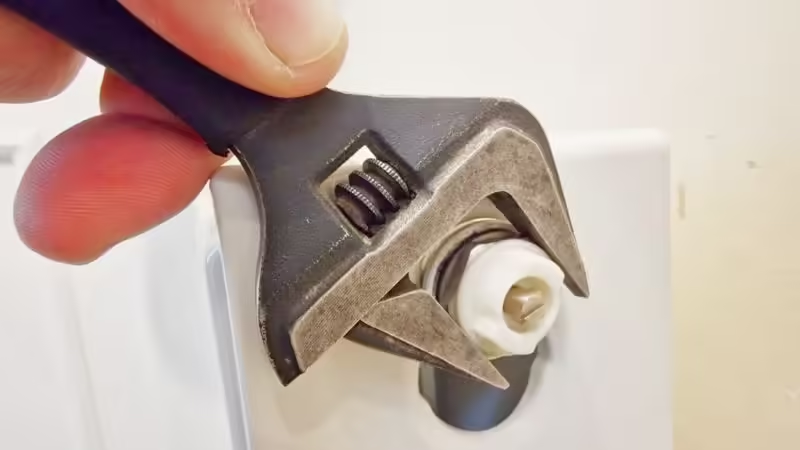
Valve leaking only when turned off
If you have a radiator valve leaking when it’s turned off, try opening the valve slightly to see if it stops. Follow the steps above for a leaking lockshield valve if this does not work. But, you might have to replace the valve. In my experience, a leak when the radiator valve is turned off is usually on old valves that are worse for wear and should probably be replaced.
Conclusion
Fixing a radiator valve leak is usually easy with no need to remove the radiator. Once you have found exactly where the leak is coming from, it should be a case of tightening the nut.
Draining the system and adding jointing compound or PTFE tape is a lot harder but might need to be done. Failing that, replacing the leaking valve might be the only solution.
Have any questions? Drop them in the comments below, I’ll do my best to help! If you found this post helpful, don’t forget to share it with others who might benefit.
FAQs
Is a leaking radiator valve an emergency?
No, a leaking radiator valve is not an emergency. It can cause damage to flooring, electrics, and possibly the rooms below the leak, but I have not seen an emergency come from a leaking valve in over a decade of plumbing.
Can a leaking radiator valve cause boiler pressure to drop?
Yes, a leaking valve will cause boiler pressure to drop. A leaking radiator is the most likely cause of a boiler pressure drop, so if your boiler keeps losing pressure after repressurising it, you should look for a leak on your heating system.
